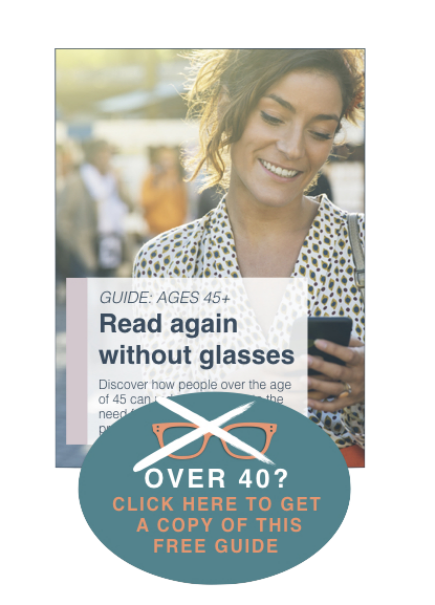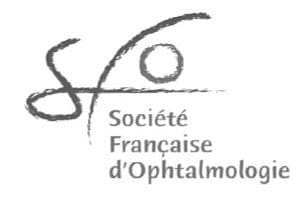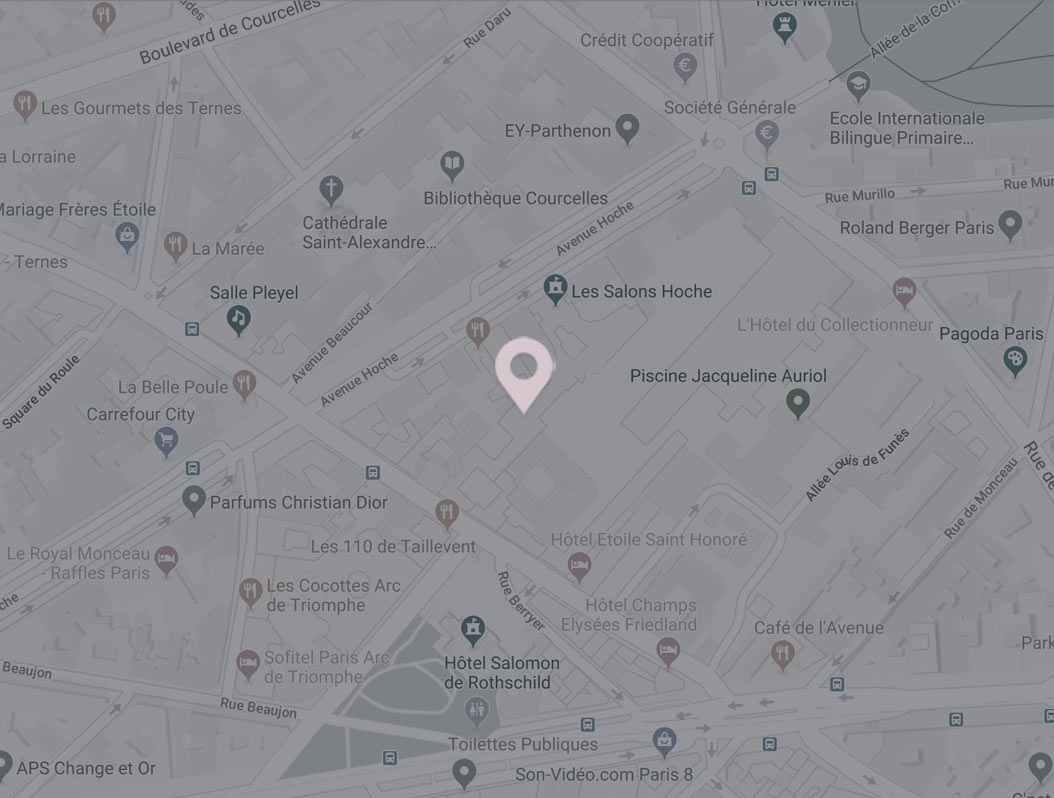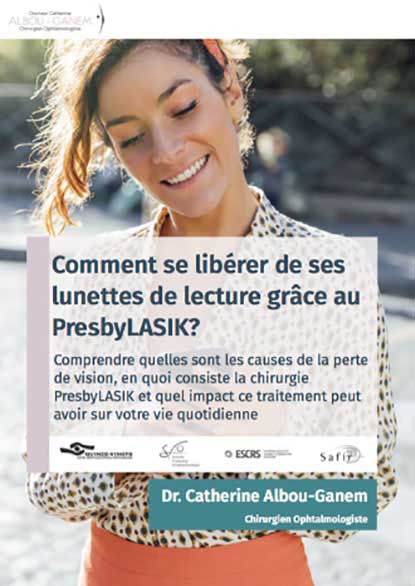Cataract
We can remove your cataracts and give you clear vision again
An introduction to cataract
A cataract is the opacification of the lens (a normally transparent lens) inside the eye.
Cataract symptoms and lifestyle impacts
A cataract corresponds to an optical and/or anatomical change in the crystalline lens. The crystalline lens is a high-power lens located inside your eye (with the objective of a camera) that plays an important role in the vision and accommodation (that is, the transition from far vision to near vision) in the young.
Cataract symptoms may include faded colours, blurry vision, halos around light, trouble with bright lights, and trouble seeing at night.
Cataract causes
A change in the chemical composition of the lens causes a cataract. The most common cause of cataracts is the ageing of the crystalline lens which causes it to harden and opacify. The senile cataract can appear at age 60.
There are other causes such as heredity, or congenital malformation, which can cause early onset of cataracts. General diseases, such as diabetes or certain metabolic disorders (calcium metabolism) can also cause the appearance of a cataract.
Long-term use of corticosteroids, chronic smoking, and prolonged sun exposure without UV protection are also known risk factors for cataracts. In younger patients, trauma (wound or contusion) is the leading cause of cataracts. Heredity and some congenital malformations are also responsible for early cataracts, as is strong myopia, sometimes in a patient’s fifties.
Cataract surgery at Clinique de la Vision
Except in special cases, surgeons perform cataract surgery on an outpatient basis (without hospitalization). The patient stays about 3 hours at the clinic.
We do not operate on the two eyes on the same day but at 8 to 15 days apart. One hour before surgery, we dilate your pupil with eye drops. We instil anaesthetic eye drops to numb your eyes. We make a small incision in your eye, break up your lens by fragmentation and aspirate the lens through an incision that is at most 2 millimetres.
We then replace your natural lens with an intraocular implant, whose power we have calculated beforehand. We then inject the folded artificial lens into the space where your natural lens had been, and then unfold and settle the artificial lens inside the eye.
Thanks to local anaesthesia, you remain conscious during the whole procedure which lasts between 10 and 30 minutes. You then leave the clinic after a snack. Your vision in the operated eye will be blurry but you’re able to move around without difficulty. With that said, it is better if someone accompanies you home.
Cataract treatment at Clinique de la Vision
There is no medical treatment (eye drops or medications) that can cure a cataract; therefore we must remove the affected lens and replace it with an artificial one.
In the absence of cataract surgery, the progressive opacification of the crystalline lens may lead to a decrease in vision, and a loss of your autonomy. Also, the increase in the volume of the ageing lens could be a source of increased intraocular pressure. Cataract surgery involves replacing your natural lens with an artificial lens or intraocular implant.
We calculate the power of this implant for each eye to compensate for the optical power of the lens while associating the correction of refractive errors (myopia, hyperopia, astigmatism) and possibly presbyopia.
With the development of multifocal lenses, cataract surgery has become a refractive surgery. It is also possible to replace the crystalline lens that can still be clear with a high-tech implant to restore optical properties that will give you freedom from glasses and contact lenses for most of your activities.
LATEST NEWS ABOUT CONDITION
FEATURED VIDEO
What do presbyopia and cataracts have in common? What are the differences?
Presbyopia is linked to age and the lens that changes and no longer makes it possible to focus from far vision to near vision. Followed by opacification of the lens, which corresponds to cataract. The difference is that the patient is presbyopic before having a cataract.
FAQs about Cataract
Corneal refractive surgery does not induce cataracts or other abnormalities of the lens. If a cataract occurs postoperatively, which is always possible given the frequency of this condition, it is unrelated to the operation.
We base our decision to perform cataract surgery on the impact and the functional discomfort that the cataract causes which vary according to each person. Your cataract needn’t ripen or mature.
TÉMOIGNAGES

“Le jour de l’intervention, je n’ai ressenti aucune gêne et aucune douleur. Après 2 h de repos j’ai pu reprendre mes activités tout à fait normalement. Deux jour après l’intervention il ne subsiste aucune gêne. Je tenais également à insister sur le fait que, contrairement aux idées reçues, ce n’est pas une intervention réservée aux personnes jeunes. J’ai 59 ans et c’est une totale réussite.”

“Le Docteur Albou-Ganem m’a opérée de la presbytie il y a un an, et je suis très heureuse du résultat, plus besoin de lunettes pour lire, même ma vue de loin est bonne. C’est un vrai soulagement pour moi, car j’ai hésité pendant un moment avant de sauter le pas, difficile de prendre une telle décision.”

“Après une opération rapide et sans douleur j’ai quasiment immédiatement remarqué une nette amélioration de ma vue de près et de loin. Au fil des semaines cela n’a fait que se confirmer et je n’ai jamais reporté mes lunettes depuis! Je ressens une telle liberté dans ma vie de tous les jours ainsi qu’une impression d’avoir rajeuni que je recommande à toute personne de le faire sans hésitation si cela leur est possible!”

“Docteur Catherine Albou-Ganem l’a immédiatement dissipée. Contact et confiance se sont installés immédiatement. Ses explications ont été claires, précises et je peux dire que le Jour J de l’opération, j’y suis allé les yeux fermés! Pour les rouvrir quelques heures plus tard avec la vue parfaite d’un homme de 30 ans!”

“L’opération a été un franc succès. J’ai maintenant 10/10e, sachant qu’auparavant j’avais une assez forte myopie (-5 et et -4,5) et un léger astigmatisme.”

“Vous m’avez opérée il y a maintenant plus de deux ans. A part pour conduire et regarder la télévision, et encore… je n’ai plus besoin de lunettes, moi qui n’ai jamais rien vu… Il m’a fallu plusieurs mois pour que ma vue s’adapte. Je tenais donc à vous remercier de cette opération qui a changé ma vie! Plus d’ulcères douloureux dus aux lentilles et la possibilité d’ouvrir les yeux sous l’eau et d’admirer les jolis poissons!”
We have replaced the images of real patients who provided these testimonials to protect their privacy.
AFFILIATIONS & MEMBERSHIPS
We are pleased to be associated with the following organisations
About the author
Doctor Catherine Albou-Ganem
Consultant Ophthalmic Surgeon
I am Catherine Albou-Ganem and I am an ophthalmic surgeon brought up in a family of ophthalmologists. I had a passion for ‘the eye’ and ‘the vision’ from my childhood. This was the subject of my first presentation at school.
Today, I share my refractive surgery activity between the hospital and the private sector.
I am proud to have contributed to the development of new laser refractive surgery techniques that can correct vision defects with accurate, effective and safe results when respecting the indications.
 Skip to content
Skip to content








